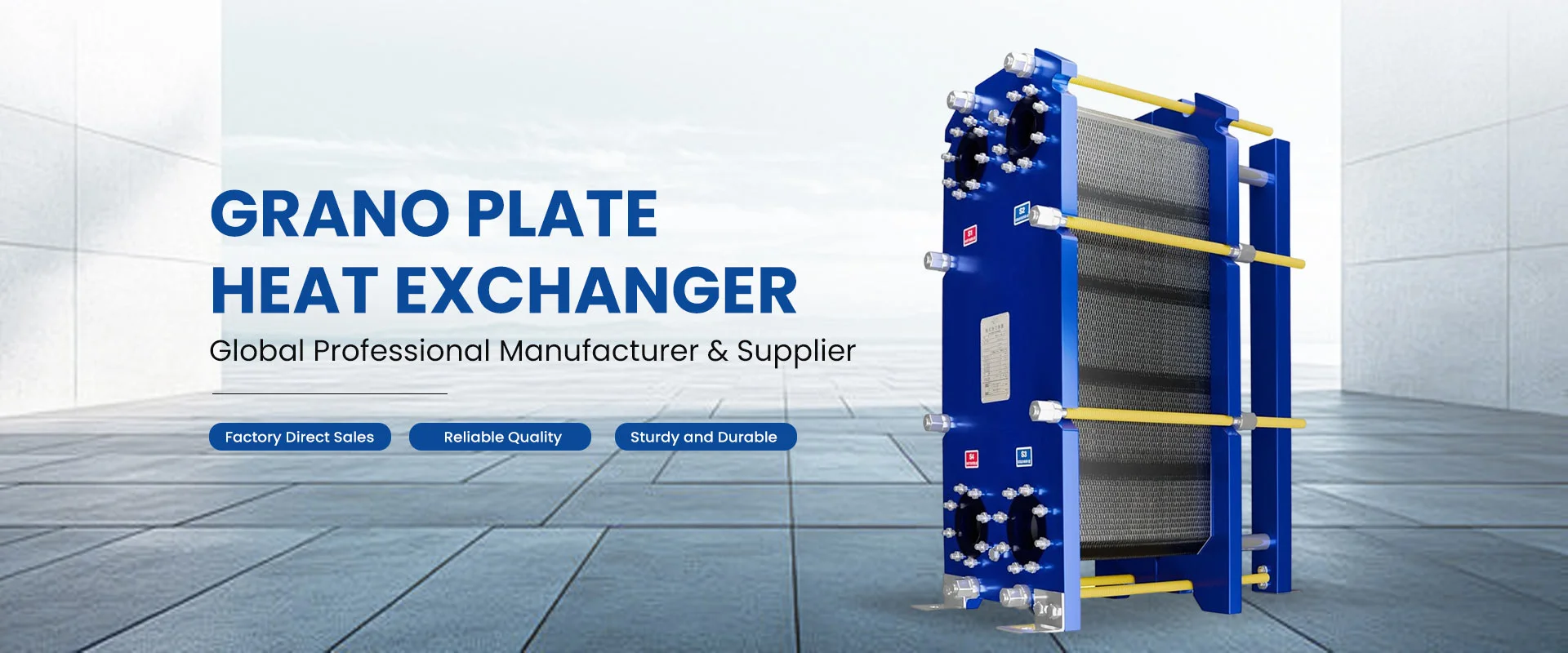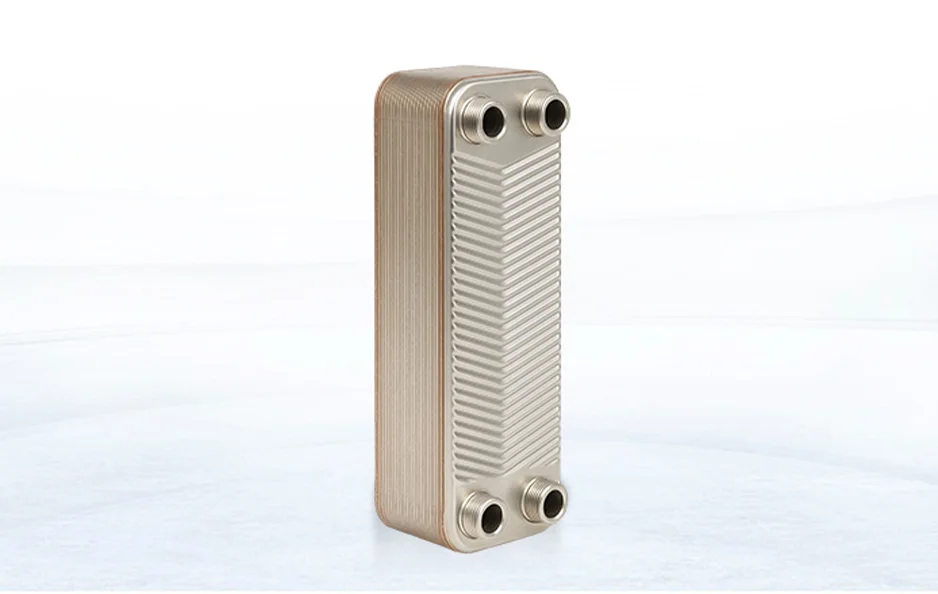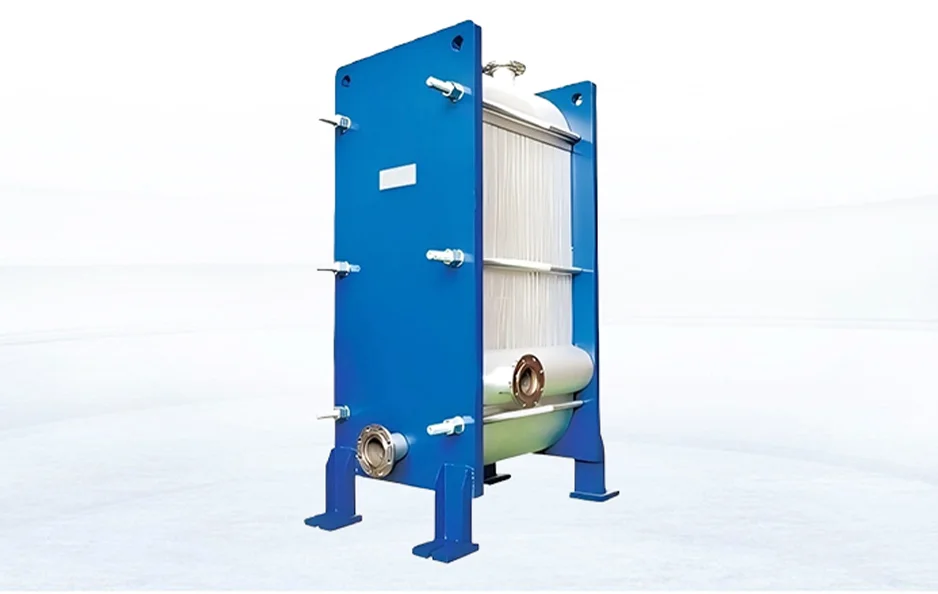
A plate heat exchanger (PHE) is a nifty piece of equipment that shifts heat from one liquid to another without letting them mix. It uses thin, crinkled metal plates to get the job done. These devices are small, dependable, and pop up everywhere—think homes, factories, or even solar power setups. Imagine a pile of wavy metal sheets, each forming narrow paths for liquids to zip through. The hot liquid heats the plates, and the cold one soaks up that warmth.
These devices are small, dependable, and pop up everywhere—think homes, factories, or even solar power setups, contributing to a global market valued at USD 4.4 billion in 2023 with an expected CAGR of 8.3% through 2032. (Source: Global Market Insights, www.gminsights.com)
Here’s the deal: hot and cold liquids travel in opposite directions through separate channels. This trick, called counterflow, makes heat swap happen fast. The plates’ wavy shape churns the liquids, making the process even quicker. Take a cheese factory, for instance—it might use a PHE heat exchanger to cool fresh milk while warming water for cleaning, all without mixing them. Gotta say, it’s pretty cool how something so small pulls off such a big job.
What Are the Main Components of a Plate Heat Exchanger?
Plates: The Core of the Action
The plates are the real MVPs in a PHE heat exchanger. They’re super thin, made from tough materials like stainless steel or titanium, and have a rippled, grooved look. Those ripples stir the liquid as it flows, speeding up the heat transfer. The material depends on what you’re working with—stainless steel for plain water, titanium for salty stuff like seawater. Picture a brewery near the ocean using titanium plates to cool beer with salty water, keeping rust at bay.
Gaskets: The Silent Protectors
Gaskets are the behind-the-scenes heroes. They sit snugly between plates, preventing leaks and guiding liquids to the right paths. Usually made of rubber or something similar, they deal with heat and pressure swings. Pick the wrong gasket, and you’re in trouble. In a lemonade plant, gaskets keep the juice separate from cooling water, ensuring everything stays clean and safe.
Frames and Pressure Plates: The Muscle
The frame and pressure plates hold everything together like a strong hug. Bolts squeeze the plates tightly between two guide rods, creating sealed channels for the heat swap. In a huge chemical factory—say, one in Shanghai—this sturdy setup keeps the PHE steady even under intense pressure.
Why Choose Plate Heat Exchangers Over Other Options?
Big Power in a Small Package
PHEs deliver serious heat transfer in a tiny space. They outshine clunky options like shell-and-tube exchangers. They outshine clunky options like shell-and-tube exchangers, with the plate and frame segment reaching USD 5.89 billion in 2023 and projecting a 5.9% CAGR through 2030 due to superior compactness. (Source: Grand View Research, www.grandviewresearch.com) If you’re squeezed for room—like in a small apartment’s heating system—a PHE slides right in. It’s like having a racecar’s engine in a scooter’s frame.
A Cinch to Clean and Fix
Cleaning a PHE is no big deal. You can take it apart, scrub the plates, and reassemble it without special gear. This is a game-changer for places like food factories where cleanliness is king. A yogurt plant in Mexico City, for example, might clean their PHE every week to meet strict health rules, keeping things running smoothly. A yogurt plant in Mexico City, for example, might clean their PHE every week to meet strict health rules, keeping things running smoothly and avoiding efficiency drops of 20-30% from fouling. (Source: Alfa Laval, www.alfalaval.ca)
Easy to Scale Up
Want more juice? Add more plates. This flexibility is perfect for businesses that grow over time. Say a small coffee roaster starts with a 10-plate PHE. When they double their output, they tack on five more plates to cool extra beans. No fuss, no muss.
How Are Plate Heat Exchangers Classified by Design?
Why Are Gasketed Plate Heat Exchangers So Versatile?
Gasketed Plate Heat Exchangers (GPHE) use removable gaskets to seal plates. You can open them up for cleaning or fixes, which is awesome for industries needing regular upkeep. Imagine a tea factory in India using a GPHE to heat water for steeping leaves, then cleaning it weekly to avoid gunk. These work great for things like food processing or heating systems.
Why Are Brazed Plate Heat Exchangers Perfect for Tight Spaces?
Brazed Plate Heat Exchangers (BPHE) ditch gaskets and bond plates with copper or nickel. This makes them compact and tough, ideal for high-pressure jobs. Back in 2021, an HVAC company in Mexico City teamed up with Grano to install BPHEs in office towers for air conditioning and hot water. Their small size fits perfectly in cramped boiler rooms, and they handle pressure like pros.

When Are Welded Plate Heat Exchangers the Best Choice?
Welded Plate Heat Exchangers (WPHE) are made for the tough stuff. Their plates are welded tight, so they can take extreme heat or harsh chemicals. Think of a chemical plant in Louisiana cooling acids that would chew through weaker materials. WPHEs are the top pick for rough environments where strength is everything.

How Do These Types Differ in Function?
Temperature and Pressure Set the Rules
Gasketed PHEs are good up to 150°C, but their gaskets can’t handle super high heat. Welded PHEs can take from -50°C to 350°C under extreme pressures, making them ideal for heavy jobs like refining oil. Brazed PHEs fall in between, perfect for moderate heat and high pressure, like in a hotel’s water heater. (Source: ScienceDirect, www.sciencedirect.com)
The Liquid Makes a Difference
The liquid you use changes the game. For regular water or mild fluids, stainless steel plates work fine. For nasty stuff like seawater or acids, titanium or nickel plates last longer. A seafood plant in Alaska might use titanium plates to deal with salty water without rust. Picking the right material keeps your PHE going strong.
Maintenance Varies by Design
Gasketed PHEs need regular gasket checks and swaps, but they’re easy to clean. Brazed PHEs are low-maintenance since they’re sealed shut, but if they clog, you replace them. Welded PHEs are super tough and need little care, perfect for remote factories where repairs are a hassle.
What Should You Consider When Picking a PHE Type?
Know Your Project’s Needs
Think about your setup. How fast are the liquids moving? What’s the temperature? Are they gentle or harsh? A vineyard cooling grape juice might go for a gasketed PHE for easy cleaning, while a power plant might pick a welded one for high heat.
Mind Your Space
Space is a big deal. In a tight spot, like a home heating system, a brazed PHE is your friend—it’s small but mighty. A hotel in Seoul might use one in their boiler to heat water for guests without eating up space. Factories with more room can handle any type.
Weigh Cost Against Savings
Brazed PHEs might be cheaper to buy, but gasketed PHEs save cash over time since they’re easier to maintain. All PHEs cut energy use, which lowers bills and helps the environment. A wind farm in Texas might choose a gasketed PHE to keep costs low while staying green.
Need a Brand That Does It All?
For reliable PHEs, Grano is a great choice. They make detachable, titanium, and welded models for homes, factories, or eco-friendly projects. With tons of experience, Grano Heat Energy Technology Co., Ltd. builds PHEs that are efficient and tough. Their team crafts solutions for any need, from a tiny house to a huge plant.
What Makes Grano Stand Out in PHE Technology?
Tailored Solutions Just for You
Grano builds PHEs to fit your exact needs. Want a specific size or material like titanium? They’ll make it happen. A geothermal plant in New Zealand might use a custom Grano PHE with titanium plates to handle hot, mineral-heavy water without breaking down.
High-Tech Tools for Easy Management
Grano offers cool features like remote monitoring. You can check pressure or buildup on your phone, spotting problems early. A brewery manager in Belgium might use this to plan cleanings before anything goes wrong, saving time and money.
Energy Savings for a Greener World
Grano’s PHEs use less energy, cutting costs and helping the planet. They’re perfect for green projects like solar or geothermal systems. A school in Canada might use a Grano PHE to heat classrooms with solar power, keeping things eco-friendly.
How Can You Choose the Best PHE for Your Industry?
Brazed Units for Home Heating
For homes or small buildings, brazed PHEs are the way to go. They’re compact and reliable, fitting into boilers or water heaters. A family in Chicago might use one to keep their house warm without taking up much room.
Welded Units for Industrial Cooling
In rugged industries like steel or chemicals, welded PHEs shine. They handle tough conditions, keeping cooling systems running smoothly. A factory in Brazil making aluminum might use one to cool hot processes.
Detachable Units for Green Energy Projects
For renewable energy, like solar or geothermal, detachable PHEs are ideal. They’re easy to expand as your project grows. A solar farm in Italy might use a Grano gasketed PHE to transfer heat from panels to water, with space to add plates later.
FAQ
Q: Can one PHE type handle multiple jobs?
A: Some, like gasketed PHEs, are pretty adaptable, but you should pick the type that matches your needs—pressure, liquid, and maintenance are key.
Q: How often do I need to service my PHE?
A: Gasketed PHEs need regular gasket checks, depending on how much you use them. Brazed PHEs need less attention but can’t be cleaned inside—if they clog, you replace them. Welded PHEs are low-maintenance, great for tough spots.
Q: What materials work best for harsh liquids?
A: For corrosive liquids like seawater or acids, titanium or nickel-based plates are top choices. They fight rust better than plain stainless steel.






